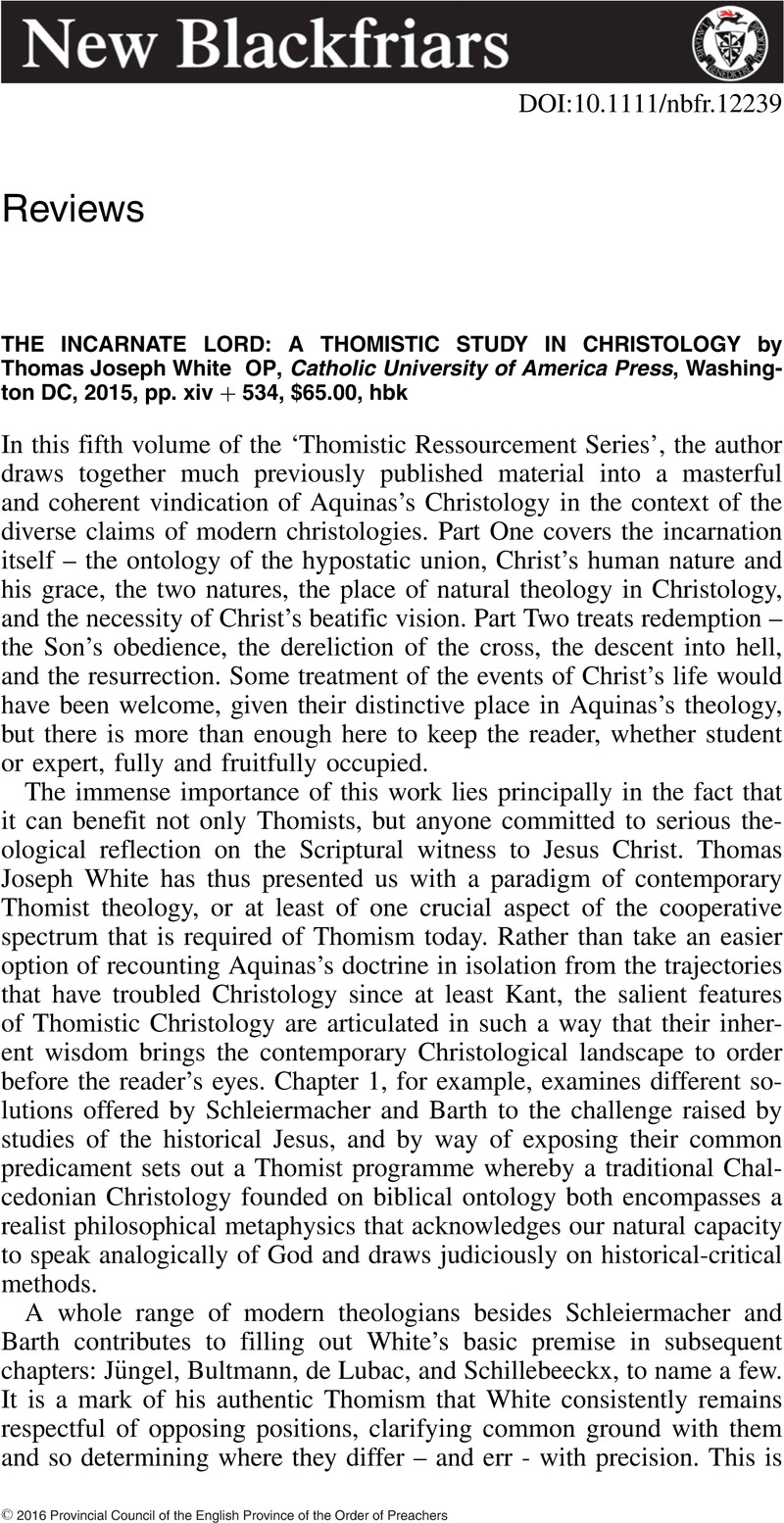No CrossRef data available.
Article contents
The Incarnate Lord: A Thomistic Study in Christology by Thomas Joseph WhiteOP, Catholic University of America Press, Washington DC, 2015, pp. xiv + 534, $65.00, hbk
Review products
Published online by Cambridge University Press: 01 January 2024
Abstract

- Type
- Reviews
- Information
- Copyright
- Copyright © 2016 Provincial Council of the English Province of the Order of Preachers


